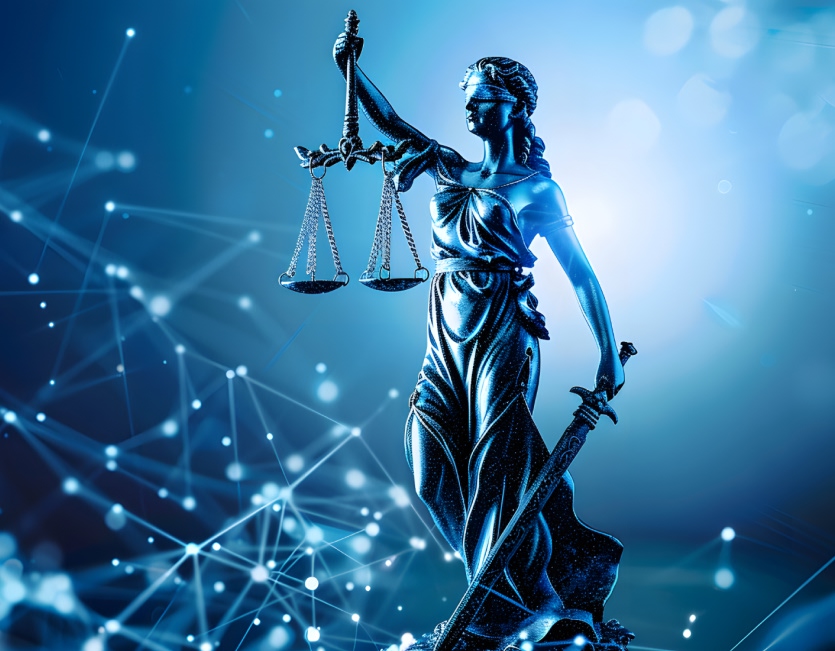Tackling Cybersecurity in the Legal World – Consequences of Cyber Attacks(Part 2)
-

Amal Purakkal
-
-
Jan 21, 2025
-
11 min Read
-

As judicial institutions embrace technology, they open doors to innovation but also vulnerabilities. These series of articles delve into the rising threats of cyberattacks on the legal sector, the profound consequences of breaches, and the comprehensive strategies necessary to build resilient defences and safeguard justice in the digital age.
Introduction
Cyber-attacks on legal institutions represent a growing challenge in an increasingly digital world. As custodians of sensitive client information and critical judicial processes, these institutions are prime targets for cybercriminals seeking to exploit vulnerabilities. From phishing scams to ransomware attacks, the threats faced by legal organisations are diverse and constantly evolving. Such attacks do more than disrupt day-to-day operations—they strike at the very heart of trust, confidentiality, and justice, which are the cornerstones of the legal system.
These attacks highlight the delicate balance between technological innovation and security. While digital tools enhance efficiency and accessibility in legal services, they also open the door to potential breaches that can jeopardise client relationships, institutional credibility, and even the broader public’s confidence in the justice system. Understanding the profound and multifaceted impacts of cyber-attacks is critical to preparing legal institutions to face these challenges effectively. And so, this article delves into the multi-faceted consequences of data breaches within the legal and justice systems.
Read the previous article in the series here: Tackling Cybersecurity in the Legal World – Common Cyber Attacks (Part 1)
The Far-Reaching Consequences of Cyber Attacks on Legal Institutions
Cyber-attacks on legal entities do more than disrupt systems – they jeopardise the very foundation of justice. From breaching sensitive client information to undermining public trust, these attacks challenge the integrity, credibility, and operational stability of legal institutions. The ripple effects are profound, touching on four critical areas: breaches of confidentiality, erosion of trust, financial strain, and reputational damage. Each highlights the urgent need for robust defences to safeguard the values that legal systems are built upon.
Confidentiality Breaches
“Putting Trust on the Line”
Cyber-attacks often result in confidentiality breaches, striking at the foundation of trust that legal institutions strive to uphold. When sensitive client data, such as financial information, privileged communications, or strategic legal plans, is exposed, the consequences can be severe. Clients may face significant personal, financial, or reputational harm. Additionally, these breaches can result in legal liabilities for the institution, leading to lawsuits, regulatory violations, and substantial penalties. Such incidents not only impact individual clients but also jeopardise the integrity of ongoing cases, potentially altering their outcomes and damaging the reputation of the judicial system.
Earlier this year, a London-based firm specialising in intellectual property law reported a significant data breach. Cybercriminals exploited an unpatched vulnerability in the firm’s email server, gaining access to sensitive client communications and proprietary documents. The breach not only exposed confidential client information but also posed a risk to ongoing intellectual property litigation.
Trust Erosion
“The Pit of No Confidence “
Public trust in legal institutions rests on expectations of fairness, impartiality, and the ability to safeguard sensitive information. Repeated cyber-attacks undermine this trust, creating a perception of vulnerability within the justice system. This erosion can deter clients from engaging with law firms or sharing critical information, while stakeholders may question the system’s ability to deliver unbiased justice. Over time, the damage extends beyond the targeted institution, casting doubt on the legal ecosystem’s capacity to function as a cornerstone of democracy.
In 2017, international firm Jenner & Block admitted that, in response to a request that appeared legitimate, the firm had ‘mistakenly transmitted’ employee W-2 forms to ‘an unauthorised recipient.’ The phishing scheme resulted in the inadvertent sharing of personal information of 859 individuals, including their Social Security numbers and salaries. Even after taking necessary reparatory measures, establishing information hotlines, and conducting townhall meetings on the data breach, the damage was done.
Financial Impacts
“The Toll on Resources and Stability”
The financial repercussions of cyber-attacks on legal institutions are extensive. Beyond direct costs like ransom payments or system restoration, institutions may face significant fines for data breaches and non-compliance with cybersecurity regulations. Operational disruptions caused by ransomware or DDoS attacks can delay critical legal proceedings, compounding financial losses. For smaller firms or underfunded judicial bodies, these costs can threaten their very survival, straining resources, and operational stability further.
In 2016, two undisclosed law firms experienced attacks involving malware known as GozNym, which criminals used to covertly steal banking login and password information from their systems. One law firm experienced a loss of more than $76,000 USD, while the other firm lost $41,000 USD. GozNym infected thousands of devices, with the potential to cause more than $100 million in losses. Thankfully, the group was dismantled as part of an international law enforcement operation before more damage could be done.
Reputational Damage
“The Credibility Crisis”
In the legal sector, reputation is paramount. A single cyber-attack can severely tarnish an institution’s credibility, raising doubts about its ability to safeguard client interests. This reputational damage is particularly harmful in an era where transparency and security are essential to client decision-making. Competitors may capitalise on such incidents, leaving the affected institution struggling to recover its standing. Beyond losing clients, the long-term effects can weaken the institution’s influence, partnerships, and ability to attract top-tier talent, emphasising the urgent need for strong cybersecurity measures to maintain both trust and operational integrity.
Just earlier this May, a New York-based firm suffered a ransomware attack. The hackers encrypted critical case files and ransomed the firm. Despite extensive backup protocols, the firm faced significant operational disruptions and legal repercussions due to the temporary loss of client data. Whilst it is difficult to calculate the reputational damage of such a breach it is most likely that such an incident would have a negative impact on the organisation.
Conclusion
The repercussions of cyber-attacks on legal institutions extend well beyond the immediate damage caused by breaches. When confidentiality is compromised, it not only harms individual clients but also threatens the integrity of ongoing cases and erodes the trust that legal organisations work so hard to build. The financial and operational fallout from such attacks can strain resources and destabilise institutions, particularly smaller firms, or underfunded judicial bodies, further magnifying their vulnerabilities.
Perhaps most significantly, these attacks can tarnish the reputation of legal entities, undermining their ability to attract clients, partnerships, and top-tier talent. As the legal world continues to digitise, the importance of implementing robust cybersecurity measures cannot be overstated. In upcoming articles, we will explore practical strategies and innovative solutions to counter these threats, helping legal and justice systems not only defend against attacks but also reinforce the trust and integrity that are vital to their purpose.
-
Topics:
-

-
Amal Purakkal
Amal is a young and upcoming content writer who is passionate about exploring the latest innovations and trends in technology. With a focus on breaking down complex ideas, and at the same time, building narratives that shape crucial discourses, Amal highlights the transformative impact of emerging technologies on society, industries, and all our lives in general.



 +971 50 9295048
+971 50 9295048  +91 9746059514
+91 9746059514